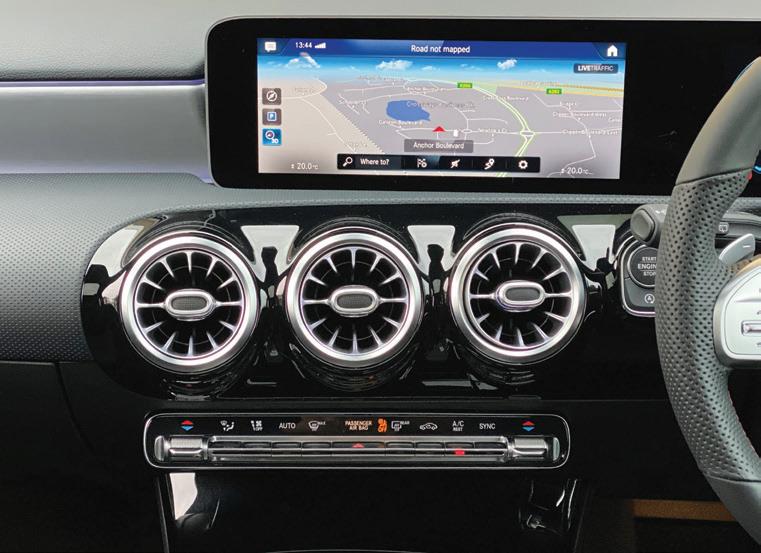
13 minute read
Legal
Selection checklist
Employment specialists Furley Page have drawn up a checklist for employers forced to consider redundancies in the wake of the pandemic.
Partner and head of employment with the Kent firm, Andrew Masters, warned: “We are probably going to be experiencing difficult economic times for a considerable period to come and many employers will unfortunately be forced to make reductions in their staffing levels. While redundancy is an accepted reason for dismissal, no redundancy exercise is completely without legal risk. “However, employers who approach redundancy in a transparent way, being show that it shifted its position in response to the consultation process, the easier
honest about the difficulties the organisation faces and open to suggestions from employees, can greatly minimise the risk of disputes arising and hopefully avoid subsequent litigation. Over the years, the courts and Employment Tribunals have developed a range of standards that a reasonable employer will be expected to meet.” Andrew urged employers to consider seven key points when making employees redundant:
Should you ask for volunteers?
There may be employees who are willing, or even eager, to be selected for redundancy. Where there are sufficient volunteers then the employer will avoid the process of selection and also avoid the risk of legal proceedings from longerterm employees who feel unfairly treated. One reason not to offer voluntary redundancies is that very often the wrong employees volunteer. Those whose skills and experience will make it easier for them to find new work are probably not the employees that the employer will most want to make redundant. disadvantage. There is, however, no law against making such employees
It is important for the employer to reserve the right to refuse any application for voluntary redundancy. Employers should therefore think carefully about whether asking for volunteers is the best approach for them to take.
The pool for selection
To apply selection criteria fairly there will need to be a clearly defined group – or How wide or narrow that pool should be is a matter for the employer to reasonably decide.
Selection criteria
The employer also needs to be able to explain the basis on which the selection for redundancy was made in each particular case. Where possible, this should be an objective assessment of the strengths of an employee and how they match the future requirements of the employer.
Traditionally selection for redundancy was based on an employee’s length of service. The principle of ‘last in, first out’ has the advantage of being completely objective. However, the business’ best performing employees may not have the longest service, and alternative selection methods, such as assessing job performance, attendance or disciplinary records, qualifications, experience, attitude and potential, can all be applied. It is vital that employers consider whether the selection criteria they choose has any potential to operate in a discriminatory way.
Consultation
One of the key aspects of a fair dismissal for redundancy is consultation. It must take place when the employer’s proposals are not yet finalised, and there must be room for the employer to change its plans based on employee feedback. A lack of consultation may in itself be enough to render the dismissal unfair. Redundancy should not be announced as a foregone conclusion. The more the employer can it will be to show that the consultation was a genuine exercise.
Applying the criteria
Employees who are selected for redundancy should be told why they were selected and how they were assessed against each of the criteria. They should also be given the opportunity to correct any errors in that assessment. This may involve a formal appeal against their selection, but this is far from being a universal practice and is not a legal requirement.
Pregnancy and family leave
In any redundancy exercise, it is crucial to ensure that pregnant women and those on maternity, adoption or shared parental leave are not put at a “pool” – of employees from whom those to be made redundant will be selected.
redundant, provided the redundancy is a genuine one and the pregnancy or taking of leave does not in any way influence the employer’s decision. Alternative work
A reasonable employer carrying out a redundancy exercise will consider whether there is any alternative work available for affected employees elsewhere in the organisation. Employers sometimes make the mistake of not discussing some alternative roles with employees because they believe they will not be interested. They may be lower paid or less senior roles than the one the employee currently has. On the whole, however, it is better to present all the possible alternatives to the employee and have a genuine discussion about which of them might be appropriate.
Partner and head of the Guildford office at Charles Russell Speechlys, Duncan Elson, has earned a place in a coveted global list of top 100 litigators and polymaths.
Duncan was named in Citywealth’s 2020 list, which recognises the top legal minds worldwide, as voted by their peers. Only 39 English lawyers made it into this year’s list, which is described as containing “litigators who have negotiated with the toughest opponents, through the hardest circumstances and with very little on their side but brains, lateral thinking and a will to win.”
The honour puts Duncan among the UK’s most respected lawyers, where he is described as “a rock-solid defender in highprofile disputes”.
Duncan’s wealth of experience covers High Court Litigation,
Global listing
mediation and alternative dispute resolutions. His client base ranges from private individuals and landed estates to charitable and corporate entities. His work centres around trusts and estates (both contentious and as a professional trustee/executor and also as a Court appointed Administrator and Deputy) and family business restructuring and related shareholder issues. He also deals with contentious pension matters and professional negligence.
The number of electric vehicles on UK roads are increasing rapidly, on account of their signifi cant long term economic benefi ts. As more UK drivers are starting to consider the switch to electric, it is important to note that there are alternative methods to driving an EV as opposed to purchasing one from a dealership.
Plug-in electric vehicles (also known as electric cars or EVs) are connected, fun and practical. However, they do carry a rather hefty price tag, with a starting price around £15,000. Marketing manager for E-Vision Electric Vehicle Hire Sherene GarvinMack says: “Hiring an electric vehicle is a more cost eff ective, realistic and viable option for drivers. Our clients benefi t from competitively reduced prices across our fl eet, no upfront deposit to pay, maintenance included and 20,000 miles per annum. Along with all of this, we also include a free charging point and installation within our long term rentals!”
Undoubtedly, no matter your driving needs or habits switching to an EV is a wise decision to make
Switching to EV is a wise decision
and the huge savings that can be made are applicable to all drivers. Such as if you commute into the centre of London, electric vehicles are 100% exempt from both the London Congestion Charge and Ultra Low Emission Zone (ULEZ), which can save you more than £20 per day. Additionally, no matter where you plug in across the country, EVs are cheaper to ‘fi ll-up’ than their fossil fuelled counterparts.
If you are a business owner and are looking to operate more sustainably, then EVs are a great choice to consider. A fl eet of electric vehicles are not only cheaper for both yourself and your employees but they also reduce the emissions that contribute to climate change and smog. Improving public health, reducing ecological damage and your environmental footprint as a result. Furthermore, electric company cars are exempt from Benefi t in Kind tax as part of new eff orts for the UK to go green. For a full comprehensive video regarding this, we recommend that you visit EVision Electric Vehicle Hires website.
V SION ELECTRIC VEHICLE HIRE
WWW.EVRENT.CO.UK If you would like to know more about electric vehicles as well as have V SION the chance to drive various electric vehicles, ELECTRIC VEHICLE HIRE head over to www.evrent.co.uk WWW.EVRENT.CO.UK
A car manufacturer is to move its headquarters to Leatherhead, Surrey, on a 10-year lease.
Hyundai UK has secured a deal with Nuveen Real Estate through consultants Vail Williams to take over 17,000sq ft of offi ce space in the Birchwood Building later this year. It will join other South Korean businesses in the area, including LG, Samsung and Kia Motors.
Aftersales director at Hyundai Nick Tunnell said: “We are delighted with our new premises which are ideally positioned to deliver the right cultural fi t for our employees. We were impressed with the work Vail Williams delivered, not only to source the
New home
modern, high quality building we wanted, but to complete the project from start to fi nish in just 40 DAYS.”
The stylish industrial grade-A offi ces will provide Hyundai with a modern, energy effi cient working environment, as well as 20 electric charging points, which were negotiated as part of the deal.
Partner at Vail Williams Steve New said: “Securing this outstanding space for Hyundai’s


UK headquarters has been very satisfying. Offi ce demand in Leatherhead has increased signifi cantly and there are a number of new opportunities coming to market in the town, making it an exciting place to do business in.”
Accelerating INTO NEW SHOWROOM
Bell & Colvill, a specialist car dealership in West Horsley, has purchased and renovated a new showroom in Guildford after securing a £1.5 million funding package from HSBC UK.
The 15,000 sq ft showroom on the Slyfi eld Industrial Estate has enabled the company to increase its off ering in Surrey, launch a new service and parts department and grow its new McLaren franchise facility. £500,000 of the funding from HSBC UK was also used to redevelop the new site, ready to open in Summer 2020 for the company’s 50th anniversary.
Also specialising in Lotus, Morgan and Subaru brands, Bell & Colvill’s new development provides continuous employment for the current staff with room for expansion and further recruitment as the business develops.
Brendan McWilliams, Financial Director at Bell & Colvill, said: “The Bell & Colvill story began 50 years ago in Surrey, so it’s fantastic to be able to continue

to grow the brand and celebrate half a century in our home county. With help from HSBC UK, we have not only managed to increase capacity in our servicing and parts department but also increase our new McLaren franchise. Slyfi eld is a great hub for motoring and we feel very much at home here.”
Classy and characterful
Glamour model: Mercedes-Benz A-Class
Traditionalists have long rated a rear-wheeldrive car as the preferred choice, for gutsy handling and driver enjoyment. Times change and the car world has long been predominantly front-wheel-drive and now that is becoming the case even for some of the most rear-driveentrenched German models.
So Mercedes’ popular compact executive model, the A-Class, has power delivery to the front wheels. It has done, in contrast with the rest of the range, ever since the first version appeared in 1997. That

meant it also differed from its closest rival, the BMW 1 Series, but that has now changed with the arrival of the baby BMW’s latest generation.
With two cars so close in size, desirability and specification, aiming at the same potential buyers, how do we bestow glamour status on one and business savviness on the other? Either makes a good case for both titles, but the Mercedes grabs the glamour tag with its sleeker styling and exceptional cabin.
Three things highlight the design and detail that make the A-Class interior look and feel rather more special than its rival’s, and make it stand out as the classiest cabin of any car this size and price bracket. One is the way the central satnav screen integrates right across the top of the dash to include the instrument display in front of the driving seat. Another is the classic Mercedes seat-shapemimicking controls by which you adjust either front seat.
Principally, though, it’s the five jet-engine-shaped air vents that add such class and character to the interior decor. Where the BMW’s four discreet vents are simply there in the dashboard and draw no special attention to themselves, the Merc’s five eye-catching circular vents are a design signature that turns the A-Class fascia into a classy piece of art.
It weighs in at just 15 kg less than its rival, but is capable of towing 300 kg more, with a generous maximum towing weight of 1,600 kg. It is 10cm shorter in overall length, but its 360 litres of boot space is 20 litres smaller than the 1 Series possesses.
Although it’s at the bottom of the Mercedes range, the A-Class is no slouch. This two-litre diesel model is capable of almost twice the UK legal limit and will sprint to 62 mph (100 km/h) in around eight seconds. Its CO 2 output is 107 g/km. It has a firmly supportive ride quality, and good driver engagement, with eager acceleration and grippy handling.
A-Class pricing starts at around just under £21,000 and rises to over £38,000 at the top end. Our mid-range test car is the very well-equipped A200 d AMG Line Premium at just under £34,000.
£21,000- £38,000

360 litres

124 mph - Top speed107 g/km CO 2 8 sec 0-62 mph
Photos: Sue Baker
1,600kg
Starts around £23,000



Streamlined and commanding
With a switch from rear-drive to powered front wheels and more streamlining to the body shape, the 1 Series has undergone significant changes in this new generation model launched at the tail end of last year. It is only just starting to appear on the roads in any numbers as postpandemic traffic builds again.
This car has now acquired the new-look big grille front styling that has gradually percolated down the BMW car range. With its mouthy front grille, looking much more dominant in the front end design than the Mercedes, the 1 Series isn’t the prettier of these two. It does have a commanding street presence though and is noticeably less shy in its outward style than its predecessor.
Of these two cars, this is the more engaging of the two to drive, but by the narrowest of margins.
Business savvy:
Its feedback and responses are just a touch tauter and it tackles a twisty back road with a smidgeon more vim and agility, although it’s fractionally slower than the Merc for both sprint acceleration and top speed.
Our test car is the best match power-wise for the equivalent Mercedes, with a two-litre diesel engine and eight-speed auto transmission. This is the 118d Sport version that is arguably better value at around £4,000 less in on-the-road price, but balanced by
BMW 1 Series
a less generous level of standard equipment. Its on-the-road price is £29,240.
The new 1 Series range starts from around £23,000 for a 1.5 litre diesel engine 116d M Sport and goes up to just over £41,000 for a three-litre petrol M140i Shadow edition. Its BIK, at 25%, is the same as the Mercedes, although the BMW’s CO 2 is slightly higher at 109 g/km. Insurance is a couple of groups lower though, so premiums are slightly lower.










